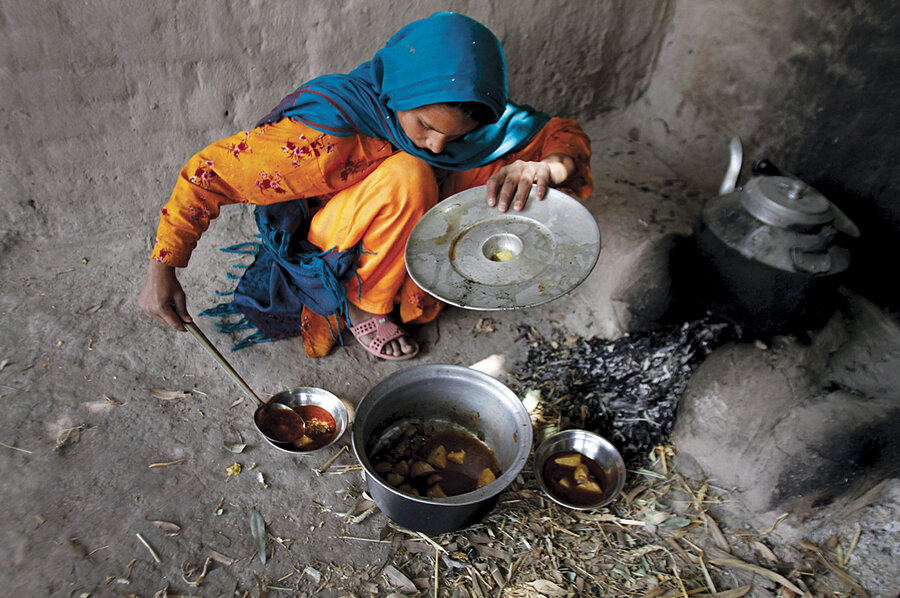The many forms of exploitation
Loading...
Millions of people worldwide are trapped in what amounts to modern-day slavery.
Shackles and whips are seldom used, but individuals desperate for money are lured into jobs in which they work for meager wages, live under the threat of violence, are subject to sexual abuse, and constantly fear arrest or deportation.
Of all the ways that workers are exploited, the most poignant stories tend to be those of women caught up in sex trafficking. A recent report by the Britain-based Anti-Slavery International group, for instance, notes that many women leave impoverished homes “with dreams in their eyes, fear and excitement in their minds at what awaits,” but too often are duped into a life of prostitution, where they are intimidated, abused, and blackmailed. A woman who manages to break free might still be charged with prostitution or illegal immigration. If she returns home, she faces shame. In some cultures, she faces death.
Stephanie Hanes’s Monitor cover story examines this difficult subject. She makes clear that forced prostitution must be combatted for the crime that it is. But because of the age-old human fascination with sex, it is all too easy to focus on that problem and overlook the many other ways that women, children, and men – as many as 27 million, by some estimates – are exploited in global industries built on cheap, often forced, labor. Everything from the produce we eat to the mineral components in our cellphones, from the clothes we wear to the unskilled workers cleaning our buildings, may be part of this system.
Forced prostitution is one of many forms of exploitation. And even it is nuanced. Sometimes the force is overt. Sometimes it is psychological. And sometimes prostitution is a choice.
Please understand: Pointing this out is not meant to minimize the problem. The United Nations estimates that at any one time as many as 2 million sex workers are under coercion. Celebrities, activists, religious officials, politicians, and concerned citizens rightly decry the practice. But the compelling nature of the problem of sexual exploitation often diverts attention and resources from other forms of forced labor.
What can any of us do?
For one thing, we can be alert to situations in which women, men, and children are living in the shadows. We can also be more conscious of choices we make that feed the demand side of human trafficking. Cheap goods are great, but what are the conditions of the workers who made them? You can get an idea of how what we buy affects human trafficking by clicking here. There's also a link to a website that can help you understand what steps you can take to lessen that effect.
* * *
This week, our Commentary team launches a series of debates on election-year issues. On page 35 are the pros and cons of marijuana legalization. We’ll also explore affirmative action, immigration, voter ID laws, foreign policy, health care, job creation, and the federal budget. You may agree with one side or the other. But just in case you don’t see the world only in black and white, we are also offering an essay that explores a middle way.
What’s a middle way? It’s a concept much maligned in our polarized public sphere: compromise, give and take, an acknowledgment that one side doesn’t have all answers.








